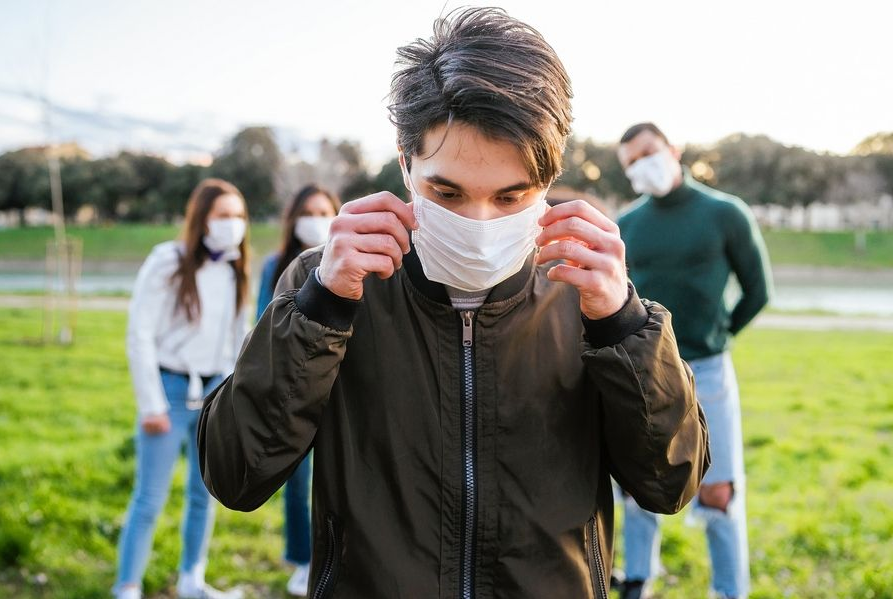Teenagers need to learn from each other — rather than from a screen
Last year an experiment was carried out on a group of adolescents to see how they would respond to being denied contact with others of the same age. The results were stark — starved of interaction with their own generation, the adolescents subsequently grew up to be more angry and fearful, drank more alcohol and found it harder to interact with others.
The adolescents in questions were “rats” (part of animal model experiment reported in The Lancet, but many of their human equivalents might wonder if a similar experiment was being carried out on them, too.
Certainly it’s not a good time to be a kid. Teenagers in previous national crises risked being bombed out of their houses, killed by polio or Spanish Flu, or being sent to fight in the trenches. What Covid is wreaking is relatively invisible, and while the disease dominating the world is vanishingly unlikely to kill anyone under 25, there is a parallel epidemic of anxiety and depression crushing its way through young minds. The Royal College of Psychiatrists is warning that the psychological damage caused by the last 12 months could last for years.
Rates of referral to child and adolescent mental health services were already alarmingly high before the pandemic; in the last year, they’ve gone up by 20%, to nearly 1 in 20 as teenagers are forced to stay home with their stressed families and live their entire lives through a screen: education, entertainment, their grandparents’ funerals and their own school-leaving prom. And, most important for teenagers, their social life.
Adolescents need their social life the way babies need food, sleep and warmth. Everything from neuroscience to centuries of human experience tells us that the process of becoming an adult happens through spending less time with parents and more time with peers. By hanging out with friends and classmates, developing our first sexual and romantic attachments, competing and admiring, going too far and having to repair social bonds, we learn to be autonomous and independent — just as our rat cousins do.
And yet, as the researchers on the animal model experiment noted, findings in rodents don’t map simply onto human teenagers. For a start, none of the rats driven to drink by their solitary confinement had access to social media.
Ever since teenagers first discovered that the smartphone in their pocket could connect them, not only to a boundless world of human knowledge and feline video action, but to their friends, rivals and potential love interest, adults have worried the damage it is doing. A January 2021 report on young people’s wellbeing and mental health is the latest to associate “heavy social media use” with worse wellbeing, especially for girls.
This association could mean that more time spent looking at digitally-enhanced depictions of impossibly beautiful people having impossibly glamorous and popular lives makes teenage girls feel worse about themselves. But it could also mean that lonely, unhappy teenagers go online more to seek support. Existing research in the pre-lockdown world shows evidence that both these things are true. Talking about “social media” in teenagers’ lives makes as little sense as debating the benefits and risks of “reading”. Scrolling passively through TikTok until a video catches your eye is very different from contacting your friends to set up a WhatsApp group, or posting your own original music on a public platform.The Indivisibility of Life
We have all been catapulted by Covid into a world where most of our interactions happen through technology, but that’s largely an acceleration of trends that were already happening. It’s the same with shops. Several high street retailers were dealt the fatal blow by lockdowns that forced us to shop online instead, but that shift was already happening. At the start of the pandemic, only one in ten UK adults had never shopped online. Yet nobody is now lining up to buy bankrupt chains of bricks-and-mortar shops, because nobody foresees a full bounce back to the bustling high street of 20 years ago.
For teenagers, interacting through digital channels was already taking the place of much face-to-face socialising. Almost half of American teens said they were online “almost constantly” in 2018. Online gaming was an important social activity, with 97% of boys playing, and four in five girls. Texting overtook “in-person” as teenagers’ favourite way to communicate, even before coronavirus forced their fast-typing thumbs.
Alongside this fast-forward phase in the tech takeover of our lives has come a heightening of existing debates. Campaigners who were already worried about what teenagers get up to on their phones are swift to blame the increase in mental distress among the young on cyber-bullying, doom-scrolling, and the endless pressure to present a perfect self image. Technology companies whose mission is “to connect the world” are are keen to show how their products can fill the void in everyone’s social existence.
This polarisation of pre-existing positions, says Professor Andrew Przybylski of the Oxford Internet Institute, helps nobody. The debate about whether technology “is good or bad, is so empty,” he says. The issue that he thinks we should be talking about is how our ability to structure our own social lives has been ceded, almost by accident, to software engineers, and to the profit motives of a handful of companies.
“The PTA, the Parent Teachers Association, has ceded authority to Google Classroom. Your trip to the pub has ceded structuring authority to some UX engineer at Zoom,” says Przybylski.
“And that’s not bad for your mental health. But that might be bad for your ability to make rational decisions about how you’re going to structure your life, or how you’re going to structure your child’s education.”
When our social interactions happen in real life, we have some control over how they work. A school PTA meeting, a college seminar, a pub quiz or a family get together, can be organised the way we think best, to foster the kind of human relationships we want. There is room to be spontaneous, to adapt or subvert the arrangements, just as people have done for millennia. Our social structures have evolved over time, a mix of conscious planning and organic change.
Online, these social structures are prefabricated. It’s as if you can only have parties by choosing between venues where not only the seating plans are rigidly fixed, but also how many people can talk at once, and for how long, and (in some cases) even what subjects are acceptable in conversation.
What does this mean for teenagers?
In some ways, they are already more at home in this mixed-dimensional world, where your friends can be constantly present even if you haven’t seen them in the flesh for months. Teenagers’ capacity to have intimate conversations online, to share experiences and occasions through screens, and to run parallel relationships simultaneously through many channels, should help them deal with lockdown better than many adults. Today’s young adults were already less likely to drink and take drugs than the previous generation, so they may not be missing pub life as much as their parents are.
But this is not to downplay the combined effects of pandemic and lockdown on young people. Alongside the threat of illness and death to their grandparents and sometimes parents, the interruption of their education, and the prospect of entering employment in a post-pandemic recession, they are losing out on experiences vital to their mental and emotional development.
Teenagers need to get together in person, and not just because their hormones are turning them into adults with sexual desires; though learning how, and with whom, to express those urges (and when to restrain them) is important. Human interaction can’t be codified. The subtleties of body language, the ambiguities of fleeting eye contact, the scary prospect of making a social faux pas in a situation from which you can’t just log off, don’t translate well into digital platforms.
The relative controllability, and predictability, of technologically-mediated interactions are part of their appeal for adolescents. The risk of misreading a situation, or being misread, is mitigated when you can re-read a text message before replying, or edit a selfie before posting. One of the very real dangers of a year spent growing up online is that it will be the “new normal” because it’s safer than the in-person alternative.
But we must be honest with ourselves. An existence mediated by technology we didn’t design, in which each of us interacts, individually, with a world bounded by a screen, was already the future into which most of us were sliding. We were already being seduced by the ease of pre-made platforms, of a social world packaged like content, of a perpetually-scrolling menu of experiences to consume. It’s less risky than unscripted encounters with flesh-and-blood human beings.
Teenagers need each other. They need to see and hear each other, so it’s no wonder their use of technology has expanded to meet that need, as well as their needs to learn, to shop, to laugh, and to escape reality for a little while. They also need to touch each other and (sorry, parents) sometimes the other senses too, and technology can’t really help with that, despite its best efforts. It’s vital for teenage sanity, in its broadest sense, that they regain the freedom to be together as soon as possible.
Meanwhile, it’s up to the adults to reflect on the world that we are making for them, and for ourselves. A world which made it possible to confine much of the population to home, each separately connected through social structures in software form. Structures designed, not by us, but by people we’ll never meet, who never asked us what we want, and merely measured our behaviour in the maze they built for us.






